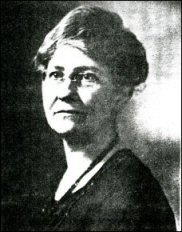|
 |
|
 |
Thursday, March 30, 1950
H. J. Sanford also carried a good line of dry goods and shoes. Both stores dealt in men's ready-made clothing, boots, and heavy clothes for working.
So we can reproduce a Monday morning, say, in Parishville in the year of our Lord, 1900. It is a bright, clear summer's day with a gentle wind wafting in clear, sweet air from the Adirondacks. The village perches at the foothills. The big whistle has blown and men are hurrying down the hill to the Hollow. The two tub shops, the saw-mills, the planning mill, and the grist-mill will soon be humming with clatter. Perhaps wagons will be loaded soon with tubs and lumber, and the teams will take their way down the Old Road, through the deep sand to Potsdam, there to be shipped by R. R. to points South and West. The road through the Center on Mud St. was not traveled so frequently as now, not having been paved. The River has not yet been diverted into the pen-stock, but rushes with mighty force and sonorous music through the gorge beneath the Little Bridge on down, emerging peacefully after awhile to take its way to the St. Lawrence. Earlier in the spring the log "drives" had passed by, some of the timber going on to the Gibson mills in W. Stockholm. The drive always brought life and color, as the "river-drivers" were a lusty lot not averse, some of them, to drinking and fighting. They did their own cooking in their own fashion and prepared hearty, nourishing meals. Their baking-powder biscuits and pancakes were "out of this world."
Once while crossing the old, big bridge on a summer's day, I saw Dave Copeland riding on a saw and Myron Link just wheeling a load of lumber across to the Island where the big piles awaited their journey to the outside world far away from their homes in the big woods. And once I met, across the bridge, a load of bark for Alex Lovey's tannery— Ah! They were busy, bumbling days!
Best of all I always loved the noise of the grist mill. Chauncey Newell operated the one here for many years. As a rule, I avoid machinery. It is so terrifically alive, so capable of mauling me to death. It seems to say in fiendish screeching, "You proud human! I can finish you in a minute!" It terrifies me, all except a hammer and screw-driver which I have to use frequently. But I do most of my tinkering with a gentle hair-pin. A grist mill always seemed warlike and destructive. The one we had was made of field stones in 1809 or 1810 by David Parish's workmen, and stood strong and sturdy until the fire of 1913.
|